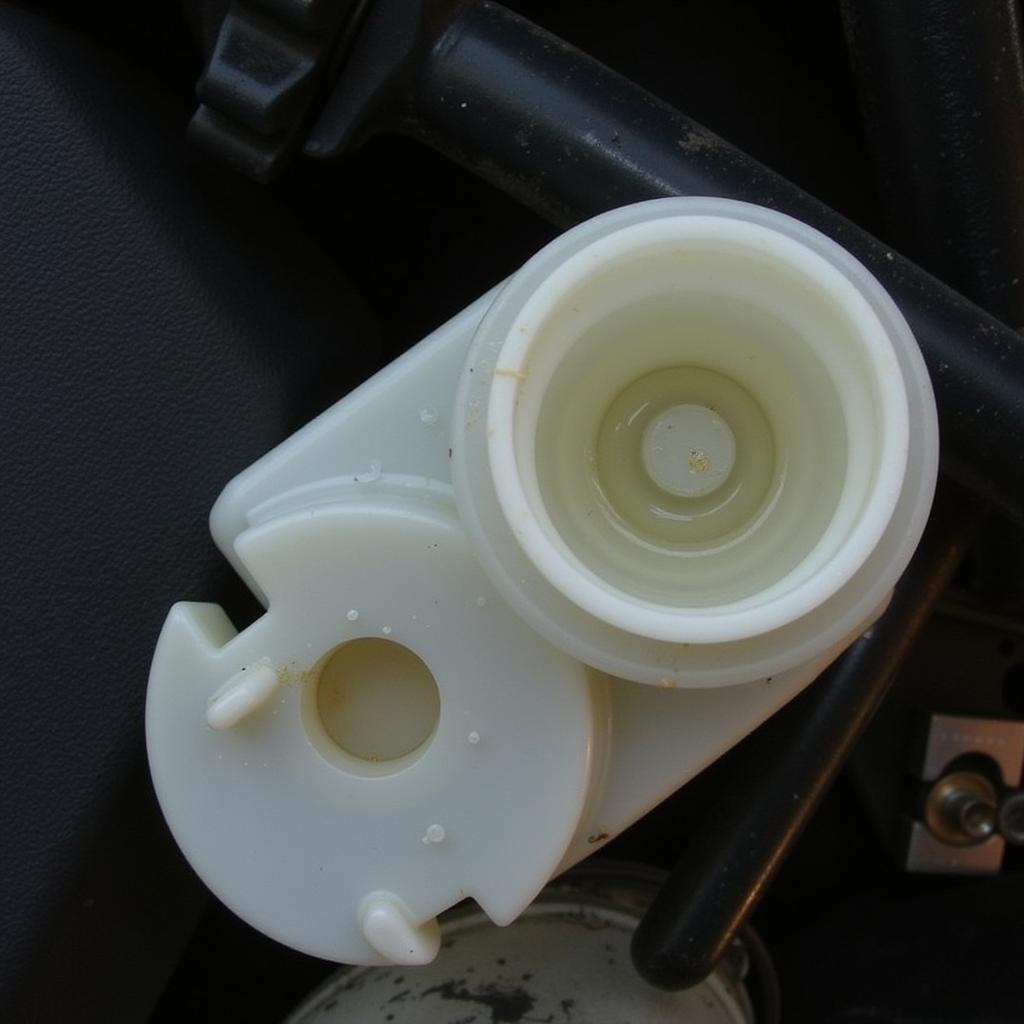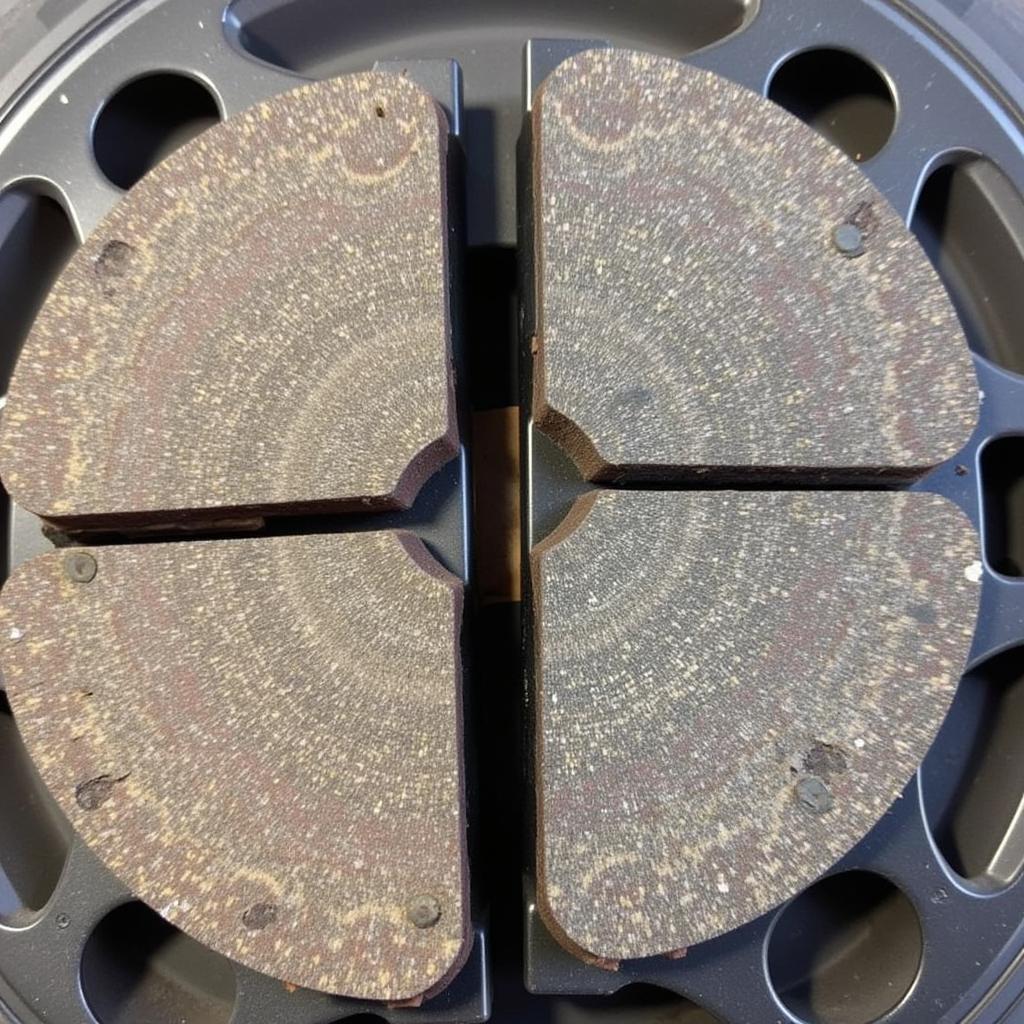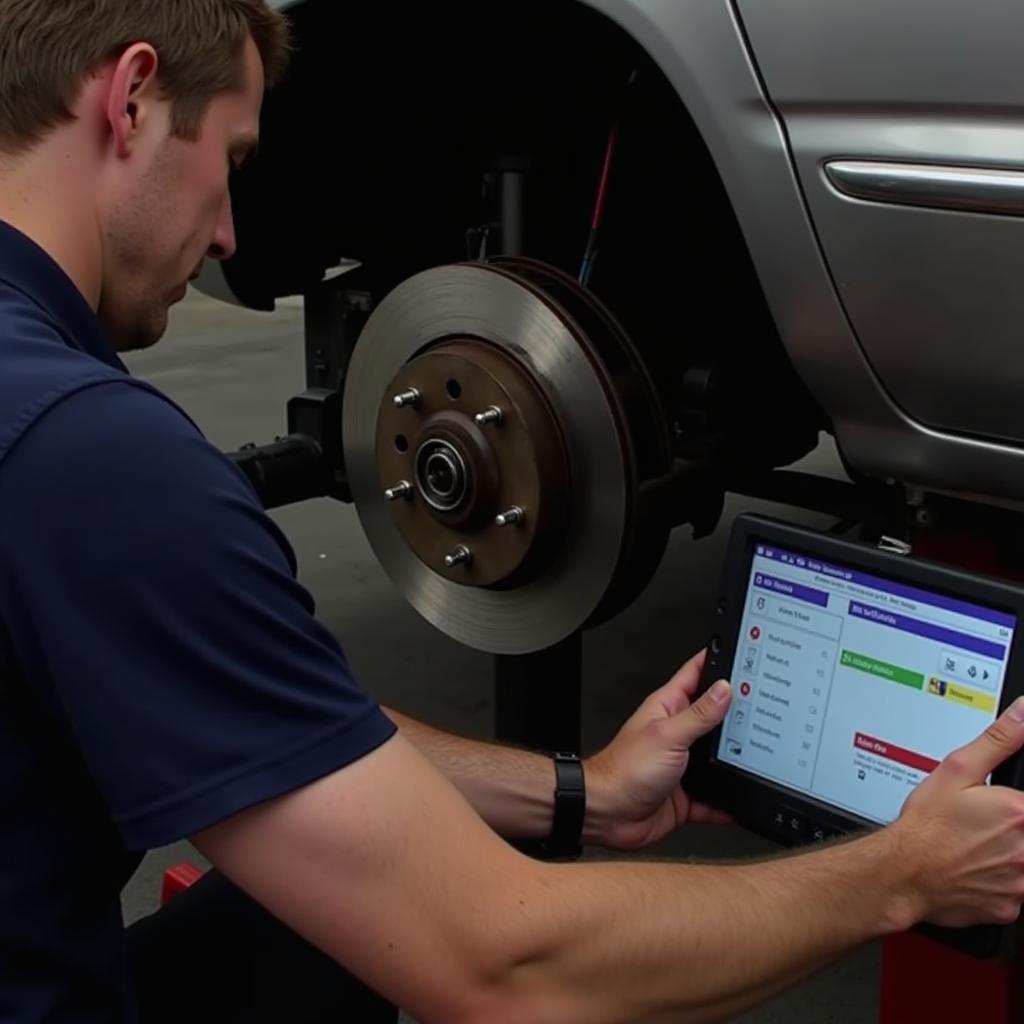The brake warning light on your dashboard is a crucial safety feature, especially in a 2005 Toyota Highlander. When illuminated, it signals a potential problem within your braking system that should never be ignored. While it can be alarming to see this light, understanding the common causes and troubleshooting steps can save you time, money, and potential hazards on the road.
Common Causes of a 2005 Highlander Brake Warning Light
Several factors can trigger the brake warning light in your Highlander. Here are some of the most frequent culprits:
1. Low Brake Fluid Level
This is one of the most common and easily addressed issues. Brake fluid is the lifeblood of your braking system, transferring force from the brake pedal to the wheels. Over time, brake pads wear down, requiring more fluid to maintain optimal pressure. If the fluid level drops too low, the warning light will engage.
Troubleshooting Tip: Check your brake fluid reservoir. It’s typically located near the firewall on the driver’s side and has a translucent container with minimum and maximum level markings.
 2005 Toyota Highlander Low Brake Fluid Reservoir
2005 Toyota Highlander Low Brake Fluid Reservoir
2. Worn Brake Pads
Brake pads are designed to wear down with use. When they reach a certain thinness, a sensor embedded within the pad will contact the rotor, triggering the warning light.
Troubleshooting Tip: Inspect your brake pads visually. If you see less than ¼ inch of pad material remaining, it’s time for a replacement.
 Worn Brake Pads on a 2005 Toyota Highlander
Worn Brake Pads on a 2005 Toyota Highlander
3. Faulty Brake Light Switch
The brake light switch is a small but vital component that activates your brake lights when you press the pedal. A malfunctioning switch can disrupt this signal, potentially triggering the brake warning light.
Troubleshooting Tip: If your brake lights aren’t working correctly along with the warning light, the brake light switch is a likely suspect.
4. ABS Issues
Your Highlander is equipped with an Anti-lock Braking System (ABS) designed to prevent wheel lockup during hard braking. If the ABS module or a wheel speed sensor malfunctions, the system can illuminate the brake warning light.
Troubleshooting Tip: If you notice unusual noises or vibrations, especially during braking, it could indicate an ABS problem.
5. Other Potential Causes
While less common, other factors like a faulty parking brake switch, issues with the master cylinder, or even electrical problems can trigger the warning light.
Expert Insight: “Many people underestimate the importance of regular brake fluid flushes,” says John Miller, a seasoned automotive technician with over 20 years of experience. “Old brake fluid can absorb moisture, reducing its effectiveness and potentially damaging brake components.”
What To Do When Your Brake Warning Light Comes On
- Don’t Panic: While it’s crucial to address the issue, a glowing brake warning light doesn’t necessarily mean immediate danger. However, it’s vital to act promptly.
- Assess the Situation: If possible, safely pull over and check your brake fluid level. If it’s critically low, adding brake fluid might temporarily solve the problem, but you’ll still need to visit a mechanic.
- Drive Cautiously (If Necessary): If you must drive, do so with extreme caution. Avoid sudden braking and maintain a safe distance from other vehicles.
- Consult a Mechanic: Even if you temporarily resolve the issue, scheduling an inspection by a qualified mechanic is essential. They can diagnose the root cause and ensure your braking system is in optimal condition.
 Mechanic Diagnosing Brake Issues on a Toyota Highlander
Mechanic Diagnosing Brake Issues on a Toyota Highlander
Conclusion
The brake warning light in your 2005 Toyota Highlander is a critical safety feature that demands attention. By understanding the common causes and following these troubleshooting tips, you can approach the situation calmly and ensure your safety on the road. Remember, a prompt inspection by a qualified mechanic is always the most reliable way to diagnose and address any brake-related concerns.
